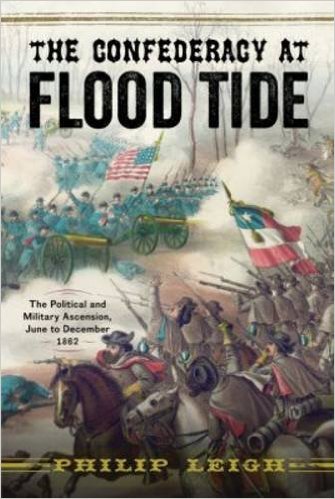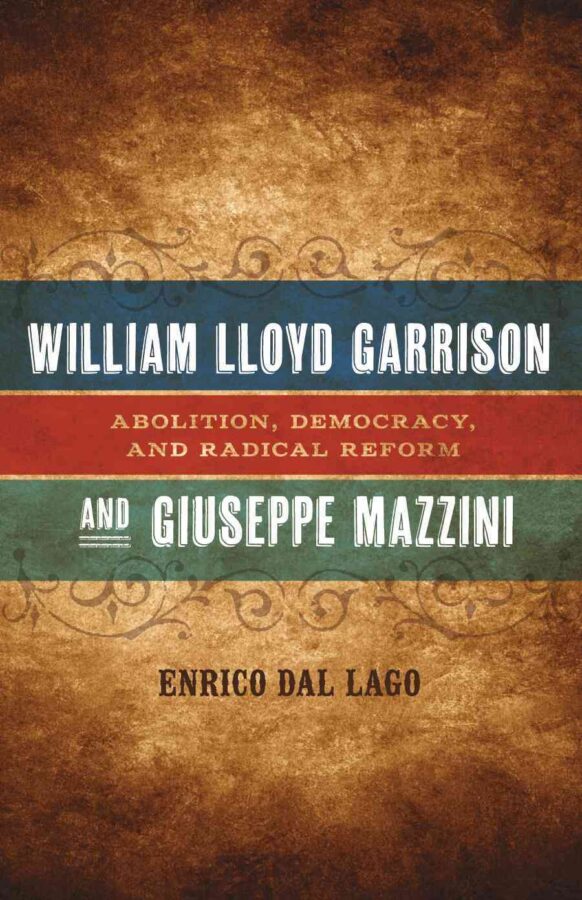The Confederacy at Flood Tide: The Political and Military Ascension, June to December 1862 by Philip Leigh. Westholme Publishing, 2016. Cloth, ISBN: 978-1-59416-248-0. $28.00.
 Bookstore shelves prove that after century and a half, the Civil War does not lack for storytellers. Many of these volumes are conventional battlefield narratives and military biographies—and of varying quality. Philip Leigh’s The Confederacy at Flood Tide takes a more novel approach than many of these popular histories, presenting readers with an overview of a pivotal period in the war’s second year. The result is an informative and concise, albeit derivative, narrative history.
Bookstore shelves prove that after century and a half, the Civil War does not lack for storytellers. Many of these volumes are conventional battlefield narratives and military biographies—and of varying quality. Philip Leigh’s The Confederacy at Flood Tide takes a more novel approach than many of these popular histories, presenting readers with an overview of a pivotal period in the war’s second year. The result is an informative and concise, albeit derivative, narrative history.
The book evades two conceptual traps to which many popular Civil War military histories fall victim. First, the author is able to avoid the talismanic allure of Gettysburg and Vicksburg, thus eschewing the oft-repeated contention that the Confederacy’s best chance at independence came and went in July 1863. Instead, it is the rebel invasions of Maryland and Kentucky in the fall of 1862 that the author identifies as the Confederacy’s “flood tide.” Second, the book does not fall into a Virginia-centric narrative of the Confederate military experience; instead, it provides readers with an overview of the eastern, western, and—to a lesser extent—trans-Mississippi theaters. Moreover, while the military experience occupies the majority of his narrative, Leigh also discusses the war’s diplomatic and political realms, offering his readers a more holistic portrait of the conflict than is found in many histories.
Relying heavily on the arguments of other historians, Leigh accurately presents the military situation in 1862. In his discussion of the Confederacy’s fortunes in the east, the author effectively highlights the centrality of Robert E. Lee and discusses the general’s stunning successes between Joseph E. Johnston’s wounding at Seven Pines and the Army of Northern Virginia’s invasion of Maryland in great detail. Under Lee’s leadership, as Leigh chronicles, the war went from “knocking on the door of the Confederate capital” to “the front porch of Lincoln’s home” in only two months (64). Leigh is also somewhat sympathetic to Lee’s primary antagonist, George B. McClellan, who he evaluates more positively than some of the North’s other celebrated generals. However, instead of evaluating these generals’ 1862 performances in their own right, Leigh relies on an anachronistic comparison with Ulysses S. Grant’s generalship during the 1864 Overland Campaign. While his contention that some historians have been overly favorable in their evaluations of Grant as a tactician is correct, this comparison adds nothing to Leigh’s narrative and weakens his otherwise cogent discussion of Lee and McClellan.
Leigh’s discussion of the Confederate war-effort in the west wisely places the high command’s dysfunction at center stage. Edmund Kirby Smith’s refusal to cooperate with Braxton Bragg during the Kentucky Campaign is presented as one of the Confederacy’s great missed opportunities. Leigh also effectively discusses the discord present in the officer corps of the soon-to-be-christened Army of Tennessee during and after the Battle of Perryville. Instead of holding the typically scapegoated Braxton Bragg wholly responsible (a remarkably persistent contention in the war’s popular memory), Leigh shows that corps commanders Leonidas Polk and William J. Hardee also deserve a share of the blame. As the author discusses, this was not a fleeting clash of personalities, but a poisonous tradition of insubordination that would haunt the Confederacy’s primary western theater army for the war’s remainder.
Although Leigh’s presentation of the military narrative is clear and his points of emphasis are wisely chosen, the author does not present any new insights into his subject. This is, at least in part, due to his research, which is overwhelmingly secondary. He relies heavily on works by Earl Hess, Stephen Woodworth, Peter Cozzens, Stephen Sears, and others. Extended block-quotes from these secondary works litter the book, disrupting Leigh’s otherwise smooth narrative. Making these inclusions all the more distracting, he oftentimes relies on these quotes simply to drive his narrative forward as opposed to providing points of analysis or argument. Moreover, he fails to draw from some of the most significant scholarship of the past decade. For example, nowhere in his discussion of Perryville does Leigh cite Kenneth Noe’s study of the battle. Earl Hess’s foundational The Civil War in the West (2010) is also conspicuous by its absence.
General readers interested in an overview of the events leading to the Confederacy’s closest brush with victory will enjoy Leigh’s book. While The Confederacy at Flood Tide is an informative, accessible, and concise narrative of one of the most pivotal phases of the Civil War, more specialized readers would be better served by turning to the literature from which the author draws so heavily.
Robert L. Glaze is a Postdoctoral Lecturer in History at the University of Tennessee, Knoxville.
